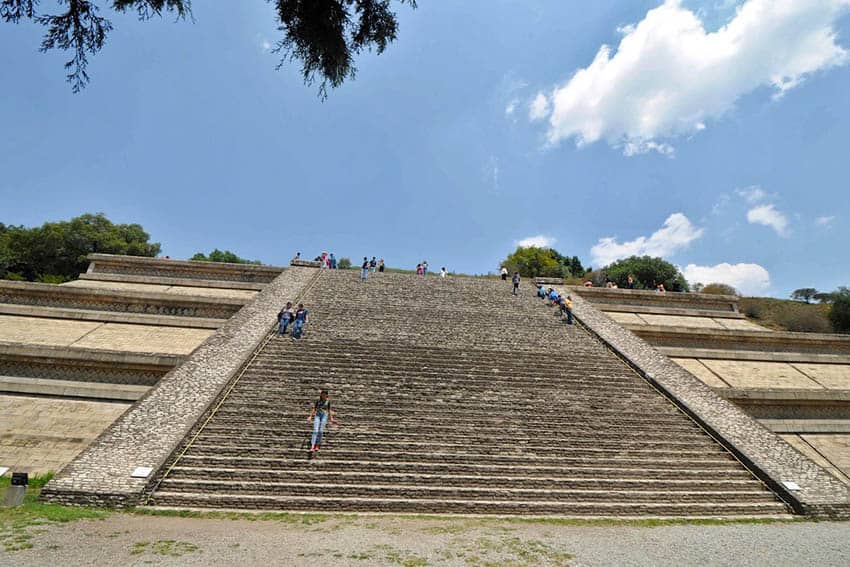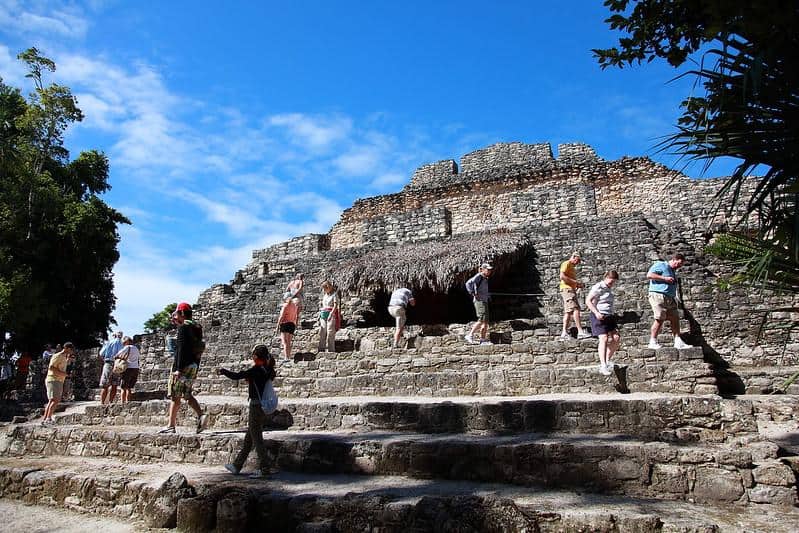
An Ex-Pat Describes the Unique Totems that you Only Find in Mexico City
By Felix Gott
Cities have a character: a sense, a feeling that defines them. Certain things unique to the city combine to form an impression that only that particular place can replicate.
Some cities, like Mexico City, wear their character on their sleeve, loudly proclaiming their style as soon as you arrive, enveloping you in the things that only that particular town can deliver.
Others are far more subtle, far more complex, and far more difficult to define, and you can really only appreciate them after diving headlong in and living like a local.
Quaint, Charming Mexico City
Despite its vast size and wide, traffic-clogged roads, Mexico City manages to retain the quaint, charming characteristics that likely haven’t changed in decades, even centuries. Watching Alfonso Cuaron’s Roma brought home how little has changed in the last 70 years, and how if you tripped through a carelessly deposited rift in time it would likely be hours before you noticed any difference in your surroundings.
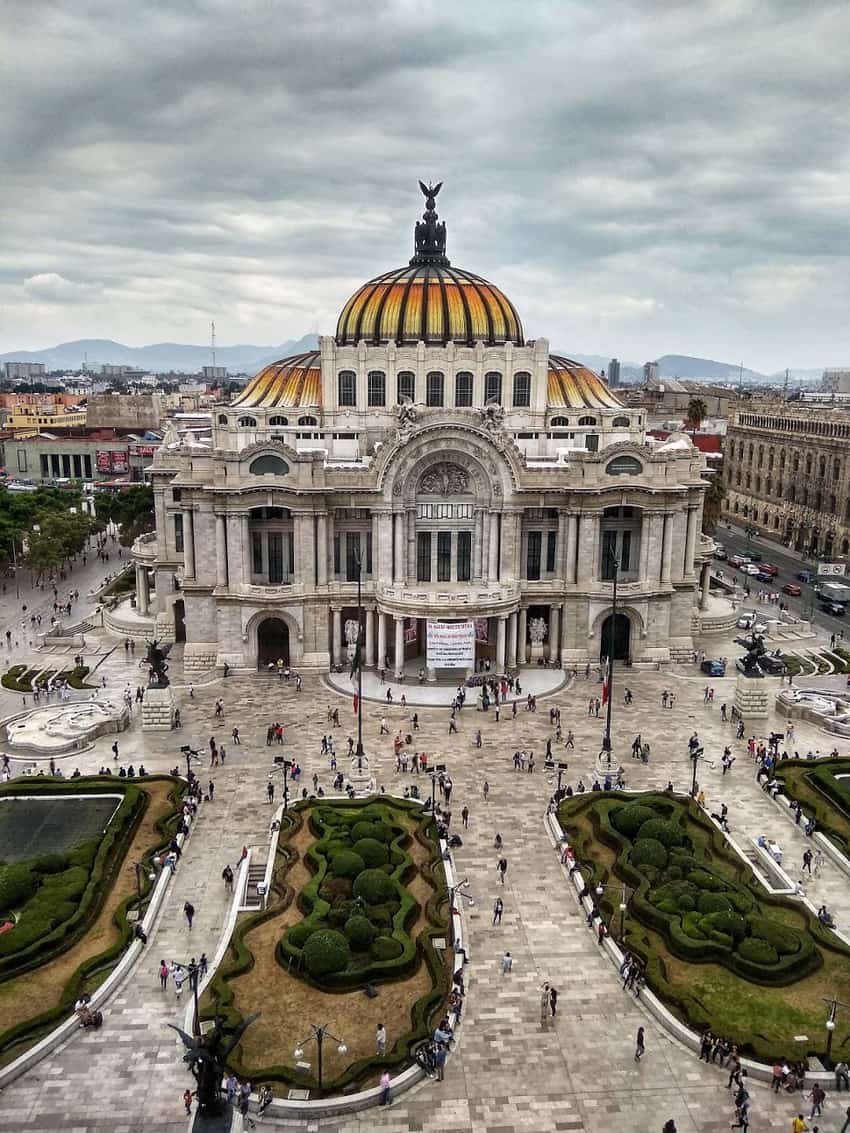
Mexico City bursts with personality, and with a unique feeling that I’ve never felt anywhere else in the world. There is almost no chance that you could ever forget where you are or mistake this mad, chaotic, wonderful place for any other city. The sights, smells, and sounds that define the city are everywhere. La Roma neighborhood, for example.
A Taste of Where You Are
You don’t even have to wander the streets to get a taste, a sense of where you are. You might think that having essentially not left the house in over three months, the sharpness of this feeling would have been blunted, and the four walls of my apartment would have become the defining feature, but in Mexico City, this is far from the case. Even locked away, the city intrudes.
As I make plans to leave this city, my home for the last two years I’ve been thinking about what makes Mexico City itself.
What are its defining characteristics? What are the things about it that you only know if you have lived here and got under the skin of the city?
I decided to think about the totems that define Mexico City (not an original concept, sadly, but one stolen from the Netflix murder-drama/comedy YOU), and try and see how well I’ve done at becoming a true Chilango.
Peseros: Public Busses and Death Races
The public transport system in Mexico City is…eclectic, to put it mildly. There’s a reason why when I asked my Mexican partner Myriam what her favorite thing about London was, she replied immediately ‘The Tube!’
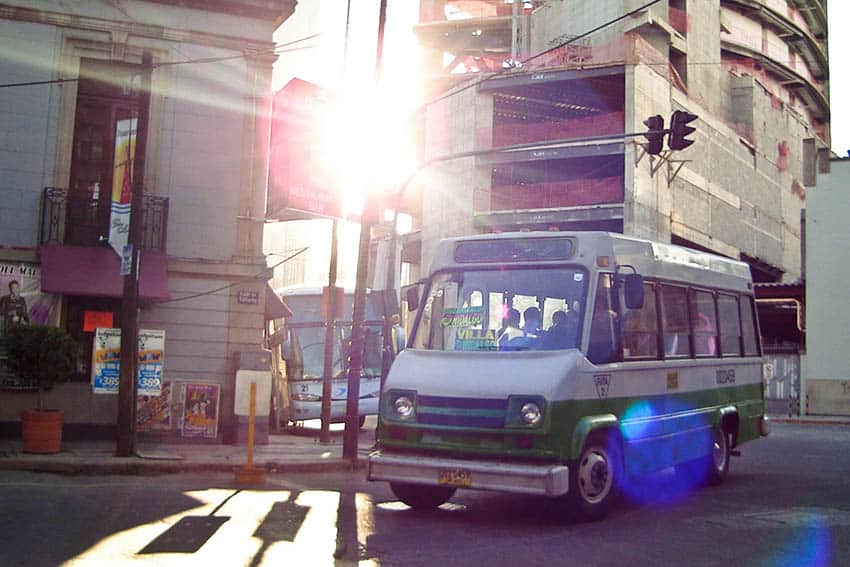
The metro, to be fair, is not too bad. Crowded, yes, and it is possible to wait for a train for ten minutes on a bad day, but it is clean, fast, and reasonably efficient. It is a significant upgrade to the New York Subway, for example.
But the buses in the city…hoo boy. They are another matter. Buses run at their own convenience, to their own timetable. Even the routes are really just guidelines, and the only real way to ensure you get to where you are going is to ask the driver where he’s heading and see how closely their plans line up with yours. At rush hour, you are extremely likely to end up hanging out the open doors, holding on to the handrail, and praying!
Peseros are King
Kings among the chaos are the classic peseros, small green rust buckets so named because they originally cost just a single peso. The drivers collect a share of the fares they collect, which leads to extreme, intense and aggressive competition between drivers on a single route to collect the most passengers.
A true rite of passage in Mexico City is being part of a pesero race, where two dueling buses charge down tiny avenues, overtaking each other in the most desperate and perilous way in order to gain an edge and find the most passengers.
Sitting down, this is a terrifying experience, but standing is genuinely life-threatening. Peseros regularly flip and crash en route as a result, which is some sort of dedication to grabbing those extra pesos!
Thrilling, adrenaline-fueled, and as close to death as I’ve felt in any experience since arriving here, no one can say they understand this city without having taken part in one of these death races.
Sweet Potato Symphony
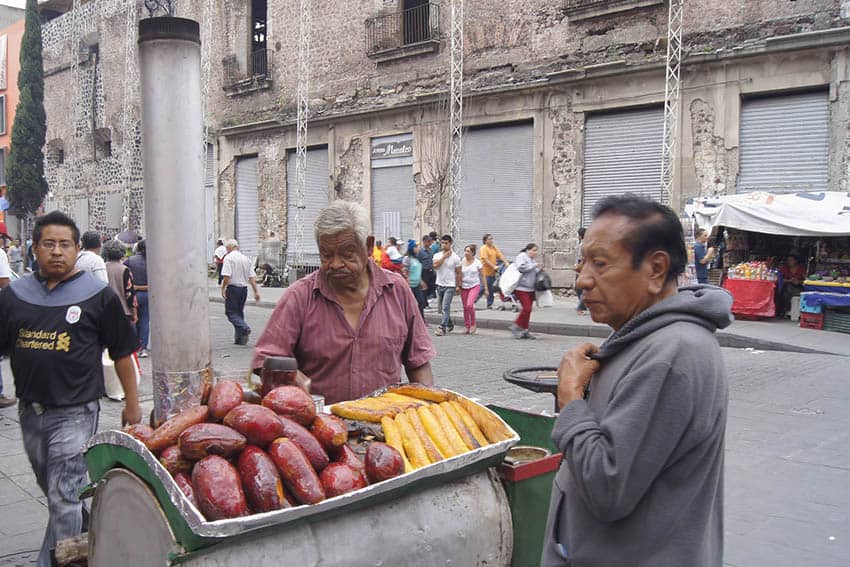
The streets in every corner of Mexico City are defined by a cacophony of remarkable melodies. Nothing is ever completely silent here, whether it’s the cries of people selling bread, meringues or gas, or the pre-recorded wails of the rag and bone men or the tamale vendor.
Even during the lockdown, the sounds of harmonipan turners wandering mariachi bands, and lone trumpeters have continued to waft through the cracks in the walls, keeping us connected to the outside world.
However, there is one sound that stands above every other. An extraordinary foghorn, a strident clarion call, a literal steamship whistle that erupts from dark, peaceful street corners to announce the arrival of this ramshackle cart and it’s delicious treats.
The Sweet Potato Man’s Cart and Loud Horn
The camote or sweet potato man pushes a frankly dangerous-looking contraption, essentially an oven strapped to a pram, with a towering steamship whistle teetering above this Heath Robinson mash-up. The camotes themselves are divine, baked to perfection in foil, and smothered in condensed milk.
When compared to the other shouts, cries, tunes, and raucous recordings that fill the air of Mexico City, the camote guy is almost a rarity. Usually only coming out after dark, they are nowhere near as ever-present as the tamales oaxaquenos, for example…but you can’t mistake the burst of sound or the rich smell of baking sweet potatoes and charcoal.
Mexico City Balloon Ride
A really vivid memory I have from when I was a kid is the image of the balloon seller at London Zoo. Standing outside the gates with a vast handful of shimmering balloons, looking for all the world as if they might just take off at any second and float up into the clouds.
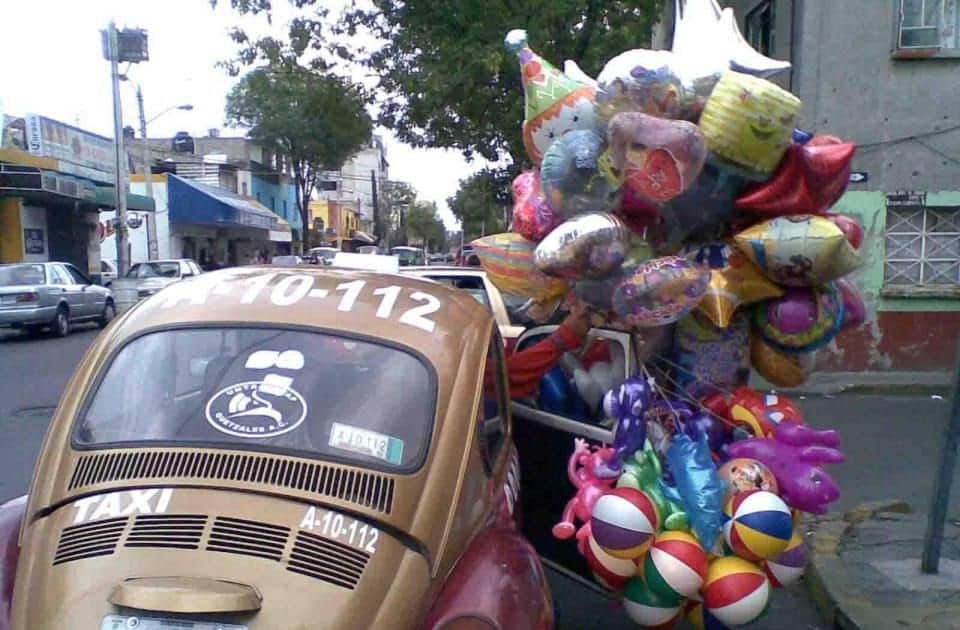
It was always an exceptionally exciting treat to be able to choose my fantastical animal, and I have a memory of once taking my chosen balloon home in a taxi, bobbing around in the back while the driver looked mildly peeved.
In Mexico City, there are similar balloon vendors, or globeros. They are not hard to find by any stretch of the imagination, clutching their vast clouds of imprisoned air everywhere that tourists and children congregate, in parks, in the center and outside attractions.
Globeros at Work
The totem here however is something a bit special. A flip reverse of my childhood experience, if you like. One of the finest, and in my opinion most iconic sights Mexico City has to offer, is a globero running late for work, grabbing a taxi, complete with a complete set of fully inflated balloons.
The globero themselves travels inside the taxi, while their wares fly free, unencumbered, out of the window in the slipstream of the taxi, held only by thin strings that remain clutched in the globero’s hands. Truly magnificent viewing.
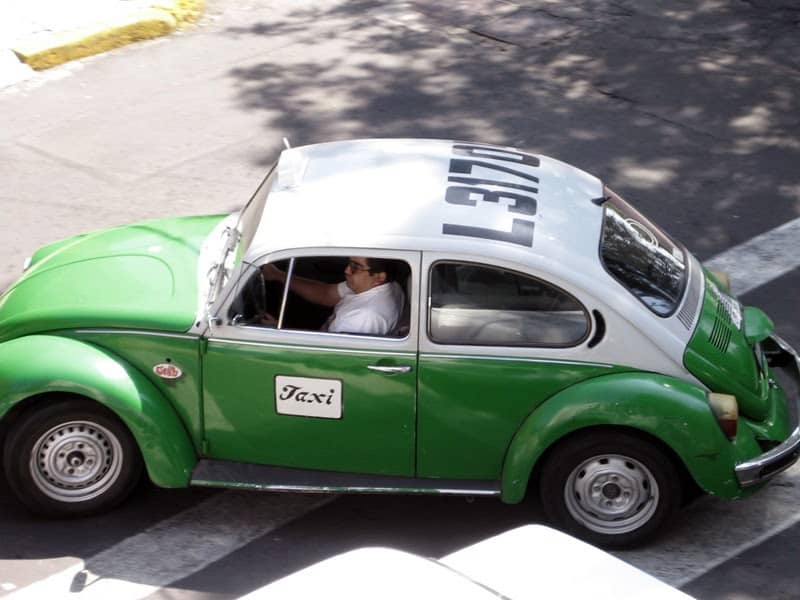
The Green Bugs of Mexico City
A few years ago, Mexico City underwent a rebranding. The city became CDMX, splashed in rosa Mexicana, and giant letters popped up around the city in parks and on famous streets, encouraging tourist photos and reinforcing this new identity.
As a part of this reinvention, the city’s licensed taxis were redesigned, daubed in the aforementioned pink livery, and smartened up (on the most part) considerably. But this bright modern image replaced something quaint and more beautiful (as is so often the case).
For years, green Volkswagen Beetle taxis (Escarabajos in Spanish) were a symbol of Mexico City. VWs remain throughout the city, reminiscent of the ubiquity of classic American cars from the 50s in Cuba.
Sturdy, durable, and incredibly easy to repair and maintain, the ‘vocho’ is inextricably interlinked with the history and character of Mexico City, and the vocho Verdes were once as famous a symbol as the black cabs in London or the big yellow taxis of New York.
These days the vocho verdes have all but disappeared, and this is without a doubt the collector’s item of this piece. Catch a glimpse of a vocho verde taxi, in particular one still plying its trade, and chances are you’ve been in DF long enough to call yourself a true chilango.

Bottled Electricity, Toques
From the sublime to the ridiculous. The phenomenon of toques is one of the weirdest attractions in a city full of bizarre customs and chaotic happenings.
My experience with toques started on my first birthday celebrated in the city. “Have you ever been electrocuted in a bar?” came the question. At first, I assumed I’d misheard, or mistranslated, but a quick look at the faces around the table indicated that nothing out of the ordinary was being proposed.
Then I heard the sound and the call: clack clack, “toques toques”. Myriam and her friends smiled gleefully, negotiated swiftly with the man who had just arrived at our table, and reached for my hands…
Toques are essentially two metal handles connected by wires, hooked up to a car battery, charged positively and negatively. Groups link hands, with the person at each end holding one of the handles. Then the toques ‘vendor’ flicks a switch, and begins to turn up the current…
This game, once confined to the local cantinas and barrios like Tepito, is now a bit of a tourist favorite. It is not, I’ve been assured, dangerous, and sharing casual electrocution with your close friends does add a bit of a spark to an evening out.
Mexico City’s Thieves’ March
I am a sucker for religious curiosities. I love a surprise bizarre heresy found in the middle of nowhere, or an ancient religion from far away popping up in an unexpected place. So it is deeply unsurprising that I love the cult of San Judas Tadeo.
San Judas (Saint Jude) is a wonderfully odd figure. Usually described as the saint of lost or desperate causes, he was apparently unpopular in early Christianity as worshipers looking to petition a saint were concerned they might accidentally pray to the other Judas, the betrayer of Christ, and so avoided him in their submissions.
This apparently worried Jude (non-corporeal though he may have been), and so he began proactively assisting those with the most hopeless of causes and the most desperate cases, just so he could be useful.
Veneration of St Jude
In Mexico City, however, San Judas has a slightly different meaning. The veneration of San Judas has become increasingly important and popular in the city, since the middle of the 20th century. He still represents lost causes but is particularly popular with those members of society who live in the grey areas or skirt around the wrong side of the law. San Judas is said to hear the prayers of both the good and the bad, and can even be petitioned to help you get away with a crime!
This association with criminals is said to originate from illegal copies of his image from Italian prints, which flipped his aspect and led to his holding a staff in his left hand, symbolizing an understanding of the darker side of human nature.
On the 28th of October, the feast day of San Judas Tadeo, thousands of petitioners flock to the San Hipolito Church, where his shrine takes pride of place at the main altar. Thousands more parade through the streets of the city, many carrying statues of this fascinating saint. There’s a feeling among the more law-abiding citizens of the city that you might be able to identify the sketchier element by watching the San Judas Tadeo parade!
A Church for the Poor
There is a rather more heartwarming end to this brilliant little piece of folk religion, as the San Hipolito church is one of the few in Mexico that allows mass participation by people struggling with drug addiction or problems with the law. It is a place for the poor, the marginalized and for younger parishioners, and is an important center for the rehabilitation of many who have fallen foul of a tough and unforgiving society.
So there you have it. For me, these are the defining images of the real Mexico City, symbols of the city’s true character, and totems that guide you towards understanding its complex and chaotic nature.
But I’m just an extranjero, so what do I know?
 Felix Gott spent ten years working in London, before fleeing the country for a new life in Mexico. A passionate traveler, he’s spent the last two years exploring some of the most amazing places in Mexico and writing about the weird and wonderful things he’s discovered, and amazing people he’s met.
Felix Gott spent ten years working in London, before fleeing the country for a new life in Mexico. A passionate traveler, he’s spent the last two years exploring some of the most amazing places in Mexico and writing about the weird and wonderful things he’s discovered, and amazing people he’s met.
- Saudi Arabia Might Be Your Next Getaway Spot - April 23, 2024
- Mongolia, the Land of Eternal Blue Sky - April 20, 2024
- These 9 U.S. National Parks Require Reservations in 2024 - April 17, 2024


